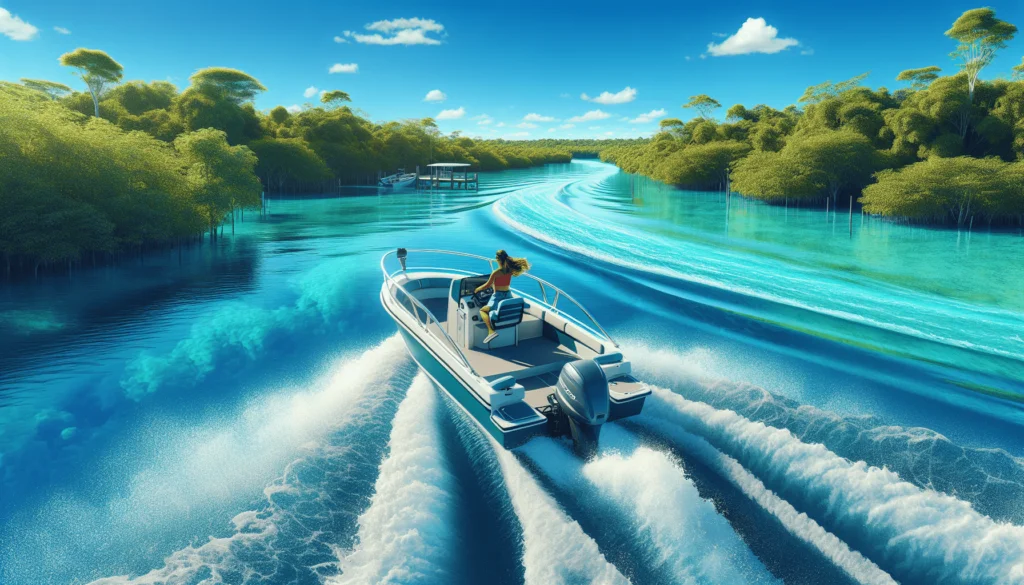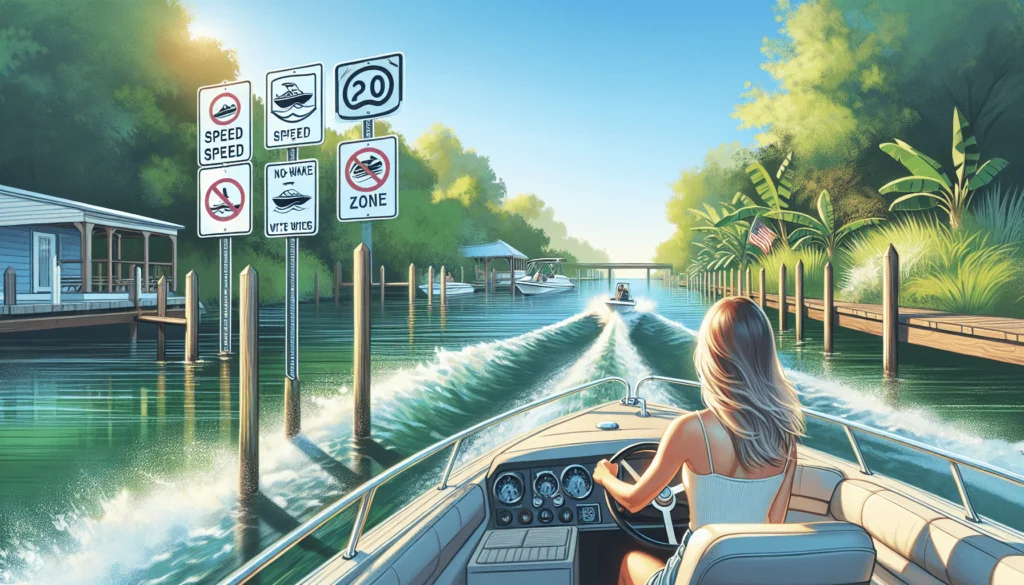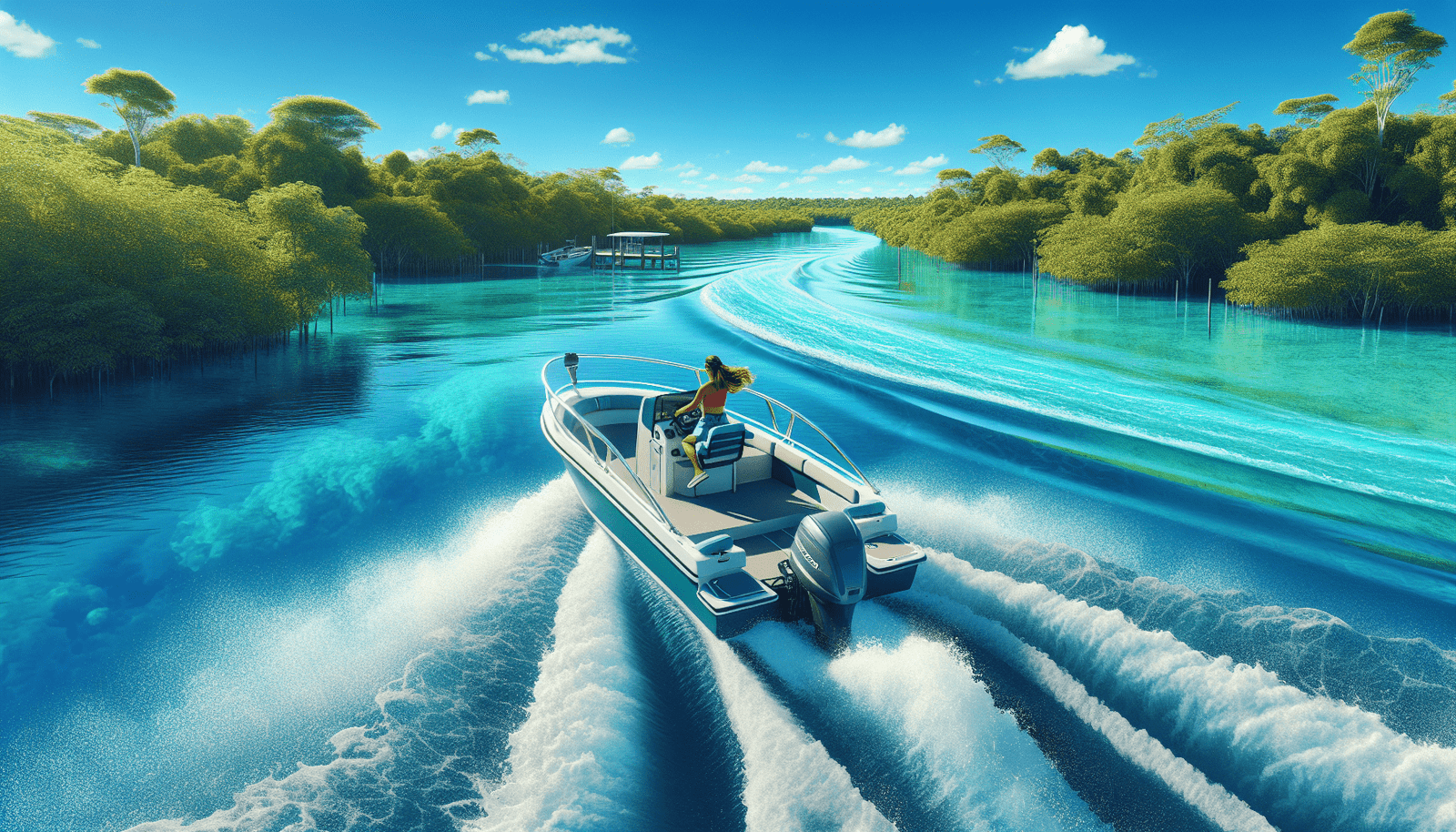Ready to embark on a thrilling adventure upon the azure waves? As you find yourself captivated by the lure of open water, it’s crucial to remember one key aspect of boating: safety. Navigating the seas or lake is not as simple as pressing down on the throttle and feeling the wind in your hair. The rules and regulations on the water are put in place for both your safety and the preservation of marine life. Your guide today focuses on “Understanding Boating Speed Limits and No-Wake Zones“, essential knowledge for every mariner. This understanding allows you to read the water’s language, a skill every respectable sailor should master. Prepare to plunge into the depths of maritime regulations and embrace your journey towards becoming a more conscientious and responsible boater.
Understanding Boating Speed Limits
Definition of boating speed limits
To cross the waters safely, one must consider not only the type of vessel in use but also adhere to the applicable speed limits. Boating speed limits define the maximum safe speed at which a boat can operate within specific boundaries. These limits aren’t just arbitrary numbers but have been established to ensure everyone’s safety while enjoying the waterways.
Why boating speed limits are necessary
There’s more to boating than riding the waves at full speed. You may view speed limits as constraints on your quest for an adrenal thrill. In reality, these are essential safety measures put in place to keep everyone, including you, safe. They play crucial roles in reducing the number of accidents, preventing damage to waterway facilities, enforcing regulations set for certain water activities, and safeguarding the wellbeing of marine life and environment.
How boating speed limits are determined
Determining boating speed limits isn’t as simple as plucking numbers out of thin air. Rather, extensive studies and considerations are involved. These include the size and configuration of the waterway, the types of boats commonly used in the area, the density of traffic, the activities carried out in the area, potential risks, and environmental factors.
Typical speed limits in different boating zones
Akin to speed limits on roadways, boating speed limits vary according to the zoning of the waterways. For instance, you may find a speed limit of 5 mph in no-wake zones, a 10 mph limit in swimming zones, or even a 25 mph limit in certain navigation channels. These numbers may vary depending on local, state, and federal regulations.
Regulations Governing Speed Limits
Federal Regulations
Vessel speed limits on federal waterways are established by the U.S. Coast Guard or the state agency where the waterway is located. The federal regulations generally apply to large passenger ships and commercial vessels.
State Regulations
Each state has its own set of boating regulations that may include speed limits. These rules apply to waterways within the state’s jurisdiction. Some states use a single universal speed limit for all waterways, while others may have different limits for different zones. It’s paramount to familiarize yourself with these rules before venturing onto state waters.
Local Regulations
Local municipalities often have their own regulations on top of state and federal ones. These rules can refer to specific bodies of water within the municipality and often consider local conditions and factors. Make sure to read up on these before setting sail in new waters.
How to know the speed limit in a given area
Speed limit signs, just like road signs, are posted near marinas, boat ramps, or along the waterway. When in doubt, refer to the local laws and regulations. If you can’t find any speed limit posted, operate your vessel at a safe speed, considering traffic and environmental conditions.

Factors Influencing Speed Limits
Waterway size and configuration
The size and layout of a waterway play a major role in determining its speed limit. A narrow and twisty river may have a lower speed limit compared to large, open waterways. This is done to ensure there’s enough time and space to react to any potential obstacle or unexpected event.
Boat traffic density
High boat traffic density demands lower speed limits to minimize the risk of collision. Speed limits may be adjusted seasonally or for special events when crowded conditions are expected.
Water activities in the area
The type of water activity going around you would also dictate the speed at which you navigate. An area popular for swimming or paddleboarding may have a lower speed limit compared to common fishing or boating areas.
Wildlife and environmental considerations
Several areas enforce lower speed limits to protect wildlife or delicate ecosystems. Higher boat speeds can disturb or endanger local wildlife, damage seagrasses, or cause shoreline erosion.
Effects of Breaking Speed Limit Laws
Penalties from law enforcement
Breaking boating speed limits can attract hefty fines and potential imprisonments. Other penalties may include attending mandatory boating safety courses, community service, or restrictions on boating privileges.
Potential for accidents and collisions
Ignoring speed limits increases the likelihood of accidents. Higher speeds give you less reaction time, limiting your ability to avoid collisions.
Damage to local ecosystem
Speeding boats can cause significant harm to the local ecosystem. Wake from boats can erode the shoreline, disturb nesting birds, and even harm underwater plants and animals.
Community disapproval and complaints
Speeding in a tight-knit boating community can lead to complaints, criticism, and scorn from fellow boaters. This can affect your reputation and enjoyment of the boating lifestyle.

Role of Boaters in Speed Limit Compliance
Knowing and understanding speed limit laws
Everyone should learn and understand speed limit laws to navigate the waters safely and responsibly. Ignorance of the rules could result in penalties and compromises safety.
Respecting other boaters
Courtesy should always be on board. Recognize every boater’s right to utilize the waterways, respect their space, and always maintain a safe distance, reducing the potential for collision and creating a friendly environment.
Prioritizing safety over speed
The charm of the sea could provoke the temptation to go fast. Nevertheless, your safety and the safety of others should always steer your speed. Slow and steady not only saves lives but also leads to more enjoyable experiences.
Reporting speed limit violations
If you notice someone violating speed limits, reporting them to the local law enforcement is a responsible action. By doing so, you contribute to maintaining the safety standards and protection of the local ecosystem.
Understanding No-Wake Zones
Definition and purpose of no-wake zones
A no-wake zone is an area where vessels are required to move slowly to minimize the wake produced. These zones are put in place to prevent damage to shoreline properties and wildlife habitats, ensure the safety of swimmers and small watercraft users, and provide a serene environment in certain areas.
Where no-wake zones are typically located
You can usually find no-wake zones near marinas, boat ramps, populated waterfronts, and swimming regions. They are also prevalent in areas known for wildlife and ecological importance.
How to identify a no-wake zone
No-wake zones are generally marked with regulatory buoys, signs, or lights indicating the beginning and end of the zone. Sometimes the entire body of water could be a no-wake zone. Always refer to your chart or local regulations to be sure.
Importance of No-Wake Zones
Safety considerations
No-wake zones are often implemented in areas with high volumes of swimmers or non-powered watercrafts, where wakes from speeding boats could jeopardize their safety. By moving slowly in these areas, accidents and collisions can be significantly minimized.
Environmental protection
Reduced boat wake in these zones allows for less shoreline erosion and less disturbance to aquatic life. This can help protect the habitats of native species and contributes to overall marine biodiversity.
Courtesy to other waterway users
Just as in any other community, courtesy counts on the water. Moving at a reduced pace in designated areas demonstrates respect for other users who may be there to appreciate tranquility and nature.
Navigating No-Wake Zones
How to slow down and maintain speed in a no-wake zone
Once you enter a no-wake zone, decrease your speed to a level where your boat doesn’t create a wake. And always remember, maintaining a slow speed is not just about respecting the rules but also about ensuring everyone’s safety.
Respecting the boundaries of the zone
Just like you wouldn’t cross a double line on a road, respecting the boundaries of a no-wake zone is essential. You must maintain no-wake speed until you are completely out of the designated area.
Dealing with pressure from other boaters
There may be instances when you feel pressured to speed up by impatient boaters. Stay unfazed by such pressures and remember, safety comes above all else.
Penalties for Violating No-Wake Zone Regulations
Types of fines and penalties
Violating no-wake zone regulations can attract various penalties. Fines are prevalent but in severe cases, you could face imprisonment or mandatory completion of a boating safety course.
Potential for boat seizure or license suspension
In some areas, repeated violations or particularly egregious behavior can lead to boat seizure or the suspension of your boating license.
Possible legal repercussions and lawsuits
If your disregard for wake zone regulations results in property damage or personal injury, you could find yourself on the wrong end of a lawsuit. The best way to steer clear of legal problems is by adhering strictly to all regulations.
Role of Law Enforcement
Monitoring boating speeds and no-wake zones
Law enforcement agencies on federal, state, and local levels play a crucial role in monitoring boating speeds and ensuring compliance with no-wake zone regulations. Whether it’s the Coast Guard, marine patrol, or local police, their presence is mandatory for maintaining order on waterways.
Enforcing speed and wake regulations
When violations are spotted, law enforcement has the responsibility of ensuring rules are enforced. This may take the form of fines, warnings, or more serious legal action, depending on the offense’s severity.
Educating the public about waterway rules and safety
Law enforcement also has a role in educating the public about the rules and safe boating practices. They organize safety awareness campaigns, provide educational resources, and often conduct public outreach to ensure that all waterway users understand the importance of speed limits and no-wake zones.
So as you steer your way through the waterways, remember to respect the rules, prioritize safety over speed, and respect other waterway users. Happy boating!


[…] might notice areas marked as ‘no-wake zones‘. These sections are designated for the protection of aquatic habitats, shoreline structures, […]
[…] like on land, the sea has speed limits too. Being wary of your boat’s speed helps maintain a safe environment for every boater […]